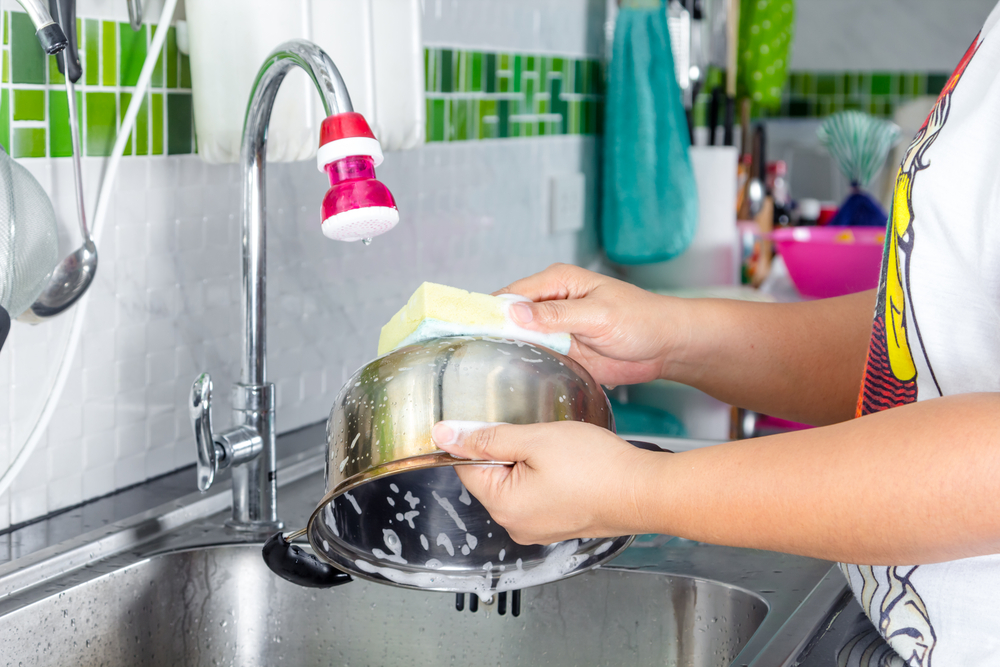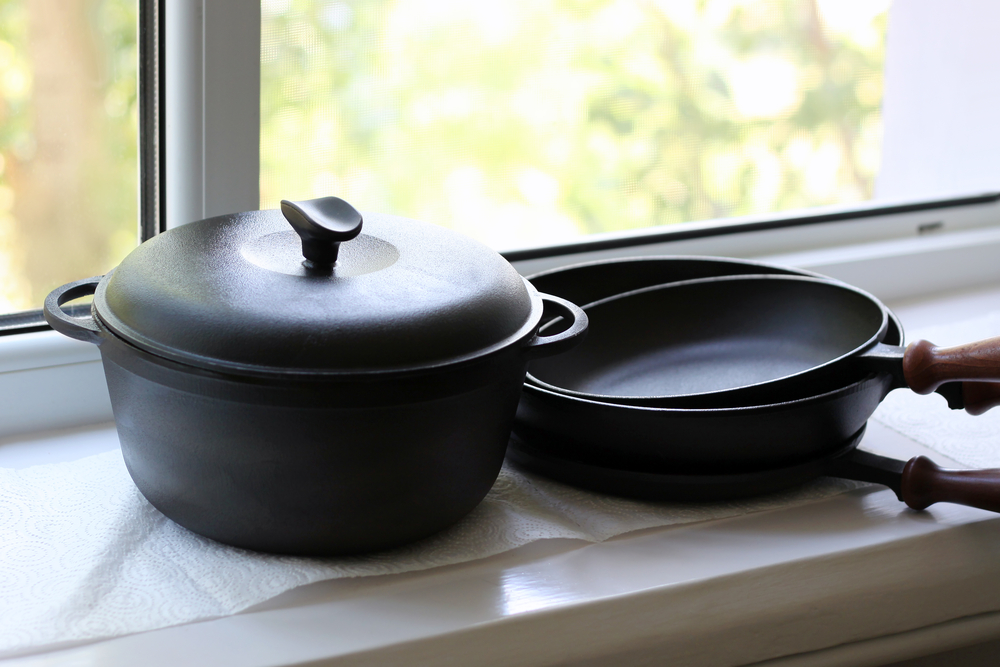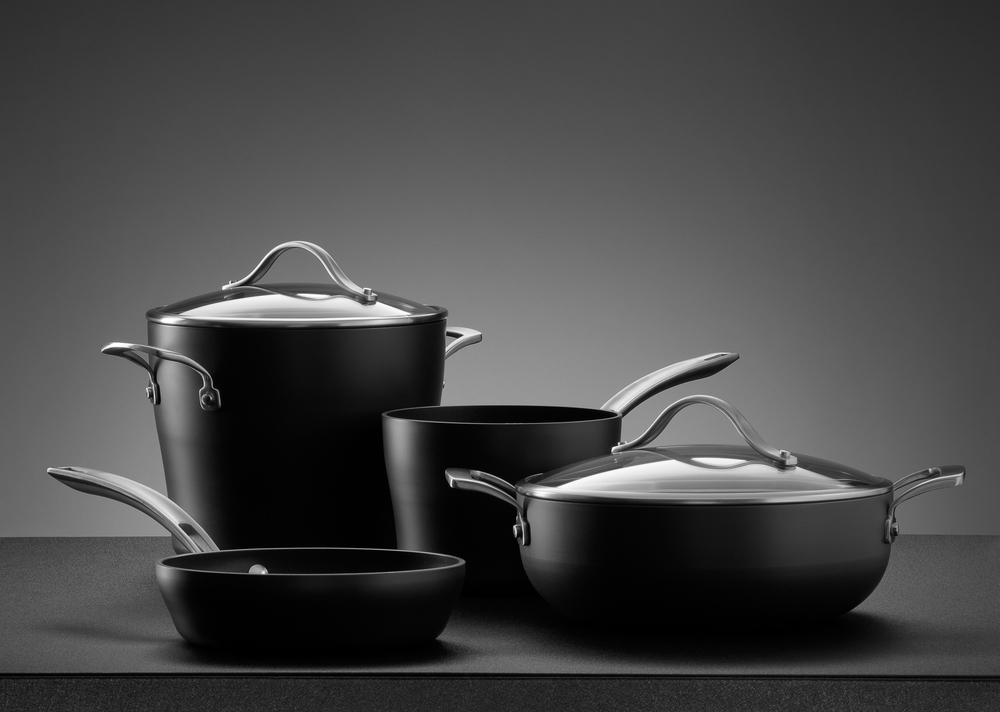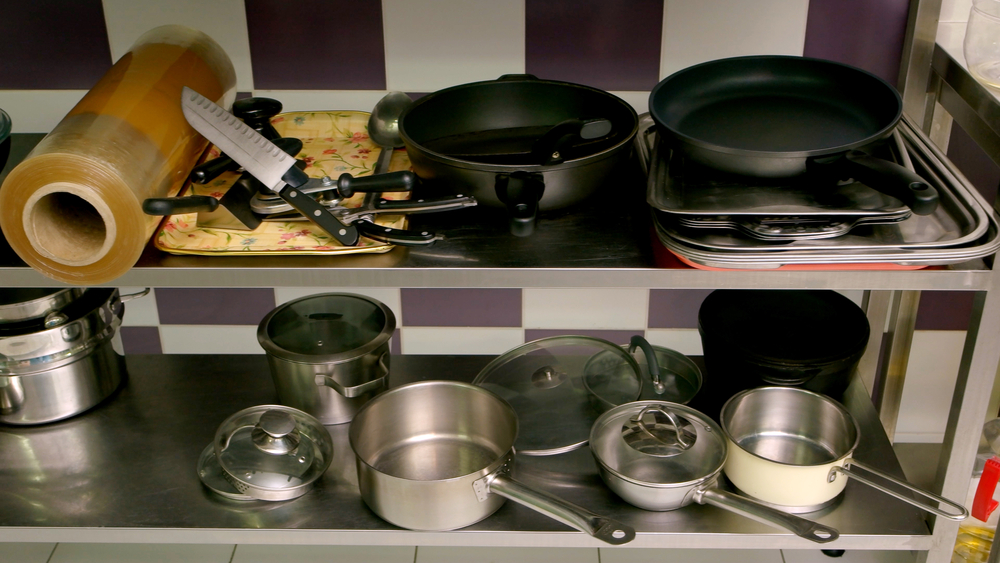Cleaning an enamel pan can be a daunting task, especially if you’re not sure where to start. Enamel cookware is known for its durability and versatility, but it requires a bit more care than other types of cookware.
Whether you’ve burned food onto the surface or you’re dealing with stubborn stains, there are a variety of methods you can use to get your enamel pan looking like new.

Understanding how enamel cookware works is the first step in properly cleaning it. Enamel is a type of glass coating that is fused to metal, usually cast iron. This coating creates a non-stick surface that is resistant to scratches and stains.
However, enamel is not indestructible, and it can be damaged if not cared for properly. Daily cleaning is essential for maintaining the integrity of the enamel surface, and there are a few key things to keep in mind when cleaning your enamel pan.
Key Takeaways
- Enamel cookware requires special care and attention to keep it looking like new.
- Daily cleaning is essential for maintaining the integrity of the enamel surface.
- There are a variety of methods you can use to remove stains and burnt-on food from your enamel pan.
Understanding Enamel Cookware
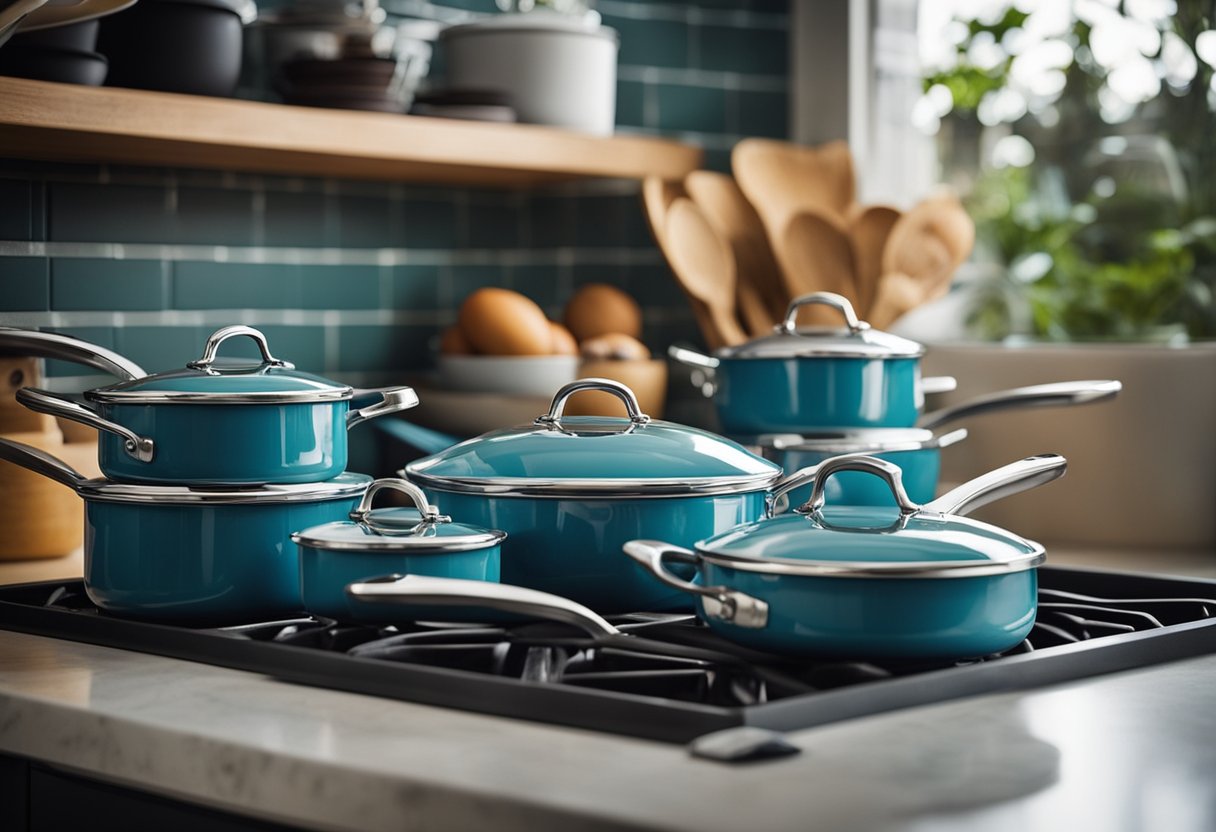
Enamel cookware is a type of cookware that has a layer of enamel coating on its surface. The enamel is made by melting glass onto the surface of the cookware.
The result is a smooth, non-porous surface that is easy to clean and does not react with acidic foods. Enamel cookware is often made of cast iron, but it can also be made of other materials like steel or aluminum.
Enameled cookware is a great option for those who want the benefits of cast iron without the hassle of seasoning and maintaining the cookware. The enamel coating prevents food from sticking to the surface, which makes it easier to clean.
Additionally, enamel cookware is available in a wide range of colors, which makes it a popular choice for those who want to add some style to their kitchen.
One popular brand of enamel cookware is Le Creuset. Le Creuset is known for their high-quality enamel cookware, including their iconic Dutch ovens.
Le Creuset Dutch ovens are versatile and can be used for everything from braising to baking. They are also available in a wide range of colors, so you can choose one that matches your kitchen décor.
When it comes to caring for enamel cookware, there are a few things to keep in mind. First, it is important to avoid using metal utensils on the surface of the cookware, as they can scratch the enamel.
Instead, use wooden or silicone utensils. Additionally, avoid using abrasive cleaners or scrubbers, as they can damage the enamel coating.
In summary, enamel cookware is a popular choice for those who want the benefits of cast iron without the hassle of seasoning and maintaining the cookware.
It is available in a wide range of colors and is easy to clean. However, it is important to avoid using metal utensils and abrasive cleaners to prevent damaging the enamel coating.
Daily Cleaning of Enamel Pans
As someone who cooks frequently, I know how important it is to keep my enamel pans clean. Daily cleaning is essential to maintain their beauty and functionality.
Here are some tips for daily cleaning of enamel pans:
- Use mild dish soap and warm water: Fill the pan with warm water and add a few drops of mild dish soap. Using a soft sponge, gently scrub the pan to remove any food residue or stains. Avoid using harsh detergents or abrasive sponges that can scratch the enamel.
- Rinse thoroughly: After cleaning the pan, rinse it thoroughly with warm water to remove any soap residue. Make sure to rinse the pan well to prevent any soap from sticking to the enamel.
- Dry the pan: Dry the pan with a soft cloth or kitchen towel. Make sure to dry it thoroughly to prevent any water spots or stains. Avoid using paper towels, as they can leave lint on the enamel.
By following these simple steps, you can keep your enamel pans looking beautiful and functioning well for years to come.
Removing Stains and Discoloration
When it comes to cleaning discolored enamel cookware, there are several methods you can try.
Here are some of the most effective ones:
Baking Soda and Water
One of the easiest and most effective ways to remove stains from enamel cookware is to use baking soda and water. Simply mix equal parts of baking soda and water to create a paste. Apply the paste to the stained area and let it sit for a few minutes.
Then, scrub the area with a soft-bristled brush or sponge and rinse with water. This method is particularly effective for removing burnt-on food and grease stains.
Salt and Lemon Juice
For tough stains, you can try using salt and lemon juice. First, cover the stained area with coarse salt. Then, cut a lemon in half and squeeze the juice directly onto the salt.
Let the mixture sit for a few minutes, then scrub the area with a soft-bristled brush or sponge and rinse with water. This method is particularly effective for removing rust stains.
Vinegar and Water
Another effective way to remove stains from enamel cookware is to use vinegar and water. Mix equal parts of vinegar and water in a bowl.
Then, soak the stained area in the mixture for a few minutes. Scrub the area with a soft-bristled brush or sponge and rinse with water. This method is particularly effective for removing mineral buildup.
Bar Keepers Friend
If none of the above methods work, you can try using Bar Keepers Friend. This cleaning product is specifically designed for removing stains and discoloration from enamel cookware.
Simply apply a small amount of Bar Keepers Friend to the stained area and scrub with a soft-bristled brush or sponge. Rinse with water and dry thoroughly.
By using one of these methods, you can effectively remove stains and discoloration from enamel cookware and keep it looking like new.
Addressing Burnt Food and Residue
When it comes to cleaning an enamel pan, one of the most common issues is burnt food and residue. Whether it’s from a cooking mishap or just regular wear and tear, dealing with burnt food and residue can be a challenge.
But don’t worry, with a little bit of elbow grease, you can get your enamel pan looking brand new again.
First, assess the situation. Does the residue just need scrubbing with a little more texture, or are you dealing with a full-blown mess?
If it’s the first scenario, you can likely clear it with baking soda, a mildly abrasive sponge (like a Scrub Daddy) or dish brush, and some exerted pressure. For more stubborn residue, you may need to use a stronger cleaning solution.
One effective method for removing burnt food and residue is using a mixture of baking soda and water. Simply mix the two together to form a paste, then apply it to the affected areas of the enamel pan.
Let it sit for a few minutes, then scrub with a sponge or brush. This method can be particularly effective for removing grease and burnt-on food.
Another option is to use a mixture of vinegar and water. This can be an effective solution for removing stubborn stains and residue.
Simply mix equal parts vinegar and water in a spray bottle, then spray the affected areas of the enamel pan. Let it sit for a few minutes, then scrub with a sponge or brush.
If the burnt food and residue is particularly stubborn, you may need to use an oven cleaner. Be sure to follow the instructions carefully, and use caution when working with oven cleaners as they can be harsh and potentially damaging to the enamel surface.
Overall, dealing with burnt food and residue on an enamel pan can be a challenge, but with the right tools and techniques, it can be easily overcome.
Whether you opt for a natural cleaning solution or a commercial cleaner, be sure to take your time and be patient, as removing burnt food and residue can take some effort.
Preventing Damage to Enamel Pans
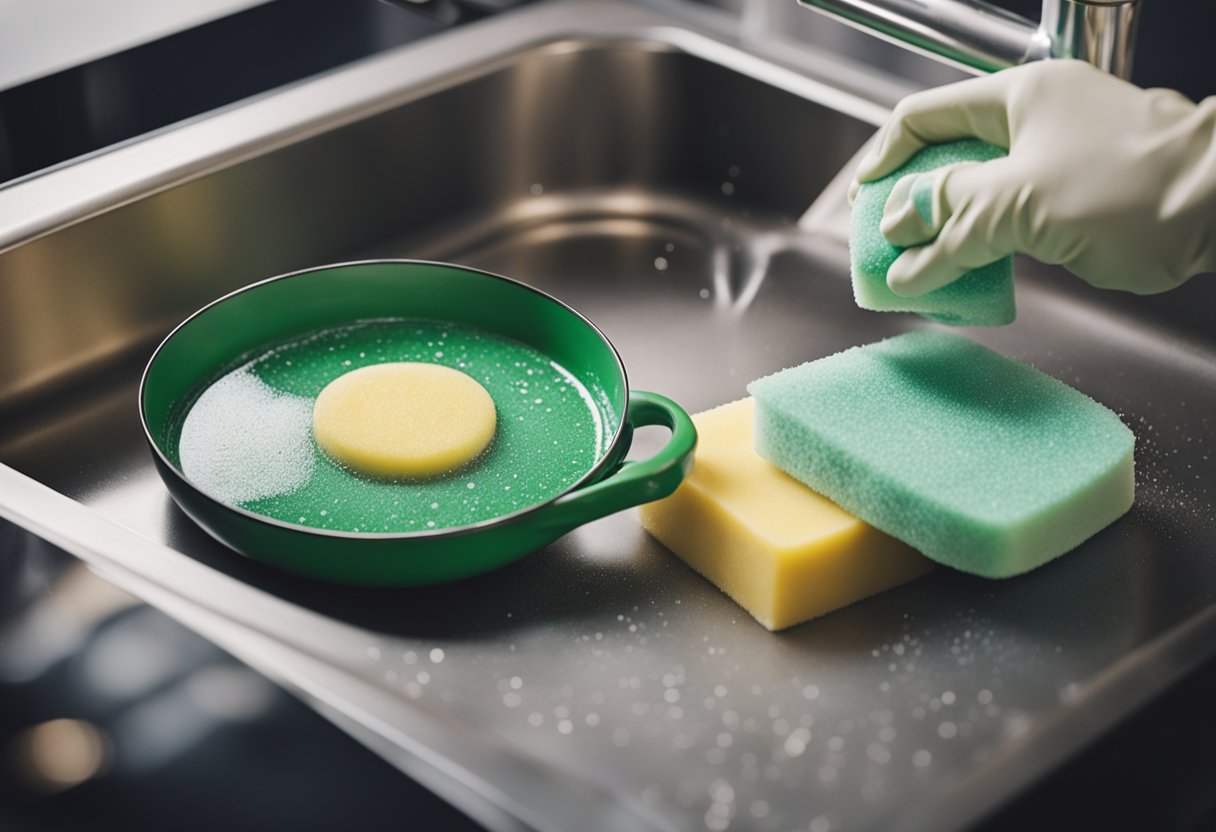
As someone who uses enamel pans regularly, I know how important it is to take care of them properly to prevent damage.
Here are some tips that I have found to be effective in preventing scratches, stains, and other issues:
Avoid High Temperatures
Enamel pans can withstand high temperatures, but it’s best to avoid excessive heat to prevent damage. When cooking, I always start with a low to medium heat and gradually increase it if necessary.
If you’re using a gas stove, make sure the flames don’t extend beyond the bottom of the pan. This can cause the enamel to discolor or even crack.
Use the Right Utensils
To prevent scratches on the enamel surface, I always use the right utensils when cooking. Metal utensils can easily scratch the surface, so I stick to silicone, wood, or nylon utensils. I also avoid using sharp knives or forks when cooking in enamel pans.
Clean Regularly
Regular cleaning is essential to prevent stains and buildup on the enamel surface. After each use, I rinse the pan with warm water and use a soft sponge or cloth to wipe it down.
If there are any stubborn stains, I use a mild detergent and avoid using abrasive cleaners or scouring pads.
Store Properly
When storing enamel pans, I always make sure they are completely dry before putting them away. Moisture can cause the enamel to crack or discolor over time.
I also avoid stacking enamel pans on top of each other, as this can cause scratches or chips in the enamel surface.
By following these tips, I have been able to keep my enamel pans in great condition for years. With proper care, enamel pans can last a lifetime and provide excellent cooking results.
Special Cleaning Techniques
When it comes to cleaning an enamel pan, there are a few special techniques you can use to get rid of tough stains and keep your pan looking like new.
Here are some of the most effective methods:
Soap and Water
The most basic way to clean an enamel pan is with soap and water. Use a gentle dish soap and warm water to scrub away any food particles or stains. Be sure to rinse the pan thoroughly with water and dry it completely before storing it.
Dryer Sheets
Believe it or not, dryer sheets can be used to clean enamel pans! Simply fill the pan with warm water and drop in a few dryer sheets.
Let the pan soak for a few hours, then rinse it out with water and dry it thoroughly. The fabric softeners in the dryer sheets help to break down any stains or residue on the pan.
Hot Water
Sometimes, all you need to clean an enamel pan is hot water. Fill the pan with hot water and let it sit for a few minutes to loosen any food particles or stains.
Then, use a soft sponge or brush to scrub the pan clean. Rinse it out with water and dry it thoroughly before storing it.
Overall, there are many effective ways to clean an enamel pan. By using these special techniques, you can keep your pan looking like new for years to come.
Proper Storage of Enamel Cookware
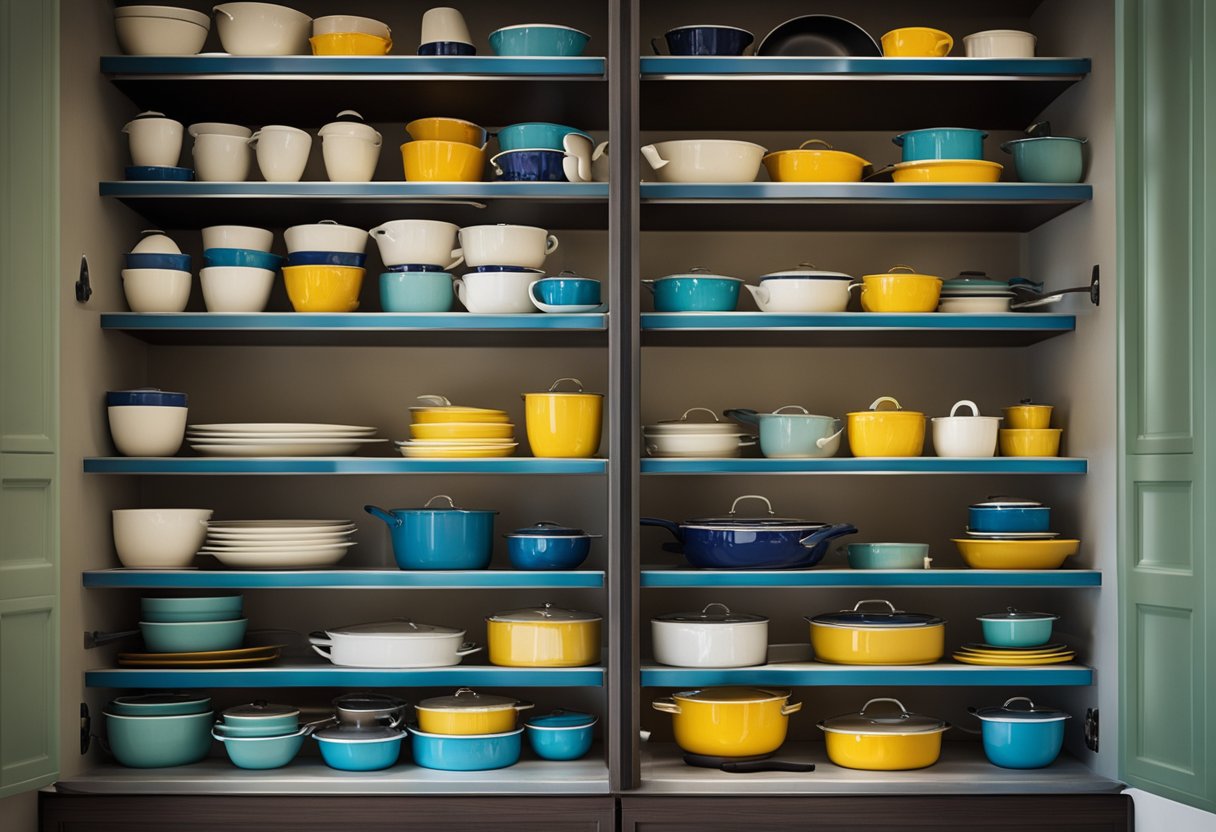
As someone who has used enamel cookware for years, I know that proper storage is essential to keep the cookware in good condition. Here are some tips on how to store enamel cookware:
Storage
When storing enamel cookware, it’s important to keep it in a dry and cool place. Moisture can cause the enamel to crack or chip, and heat can cause the enamel to warp.
Therefore, it’s best to avoid storing enamel cookware in direct sunlight or near a heat source.
One way to store enamel cookware is to stack it. However, it’s important to place a soft cloth or paper towel between each piece to prevent scratches and chips.
Another way to store enamel cookware is to hang it. This not only saves space but also allows for easy access and prevents scratches.
Handle
The handle of an enamel pan is an important part of the cookware. It’s important to handle the pan with care to prevent the handle from breaking or becoming loose.
When storing enamel cookware, it’s best to store it with the handle facing up. This prevents the handle from becoming damaged or bent.
In addition, it’s important to avoid using metal utensils with enamel cookware, as this can scratch the enamel and damage the handle. Instead, use wooden or silicone utensils, which are gentle on the enamel and handle.
Overall, proper storage of enamel cookware is essential to keep it in good condition and extend its lifespan. By following these tips, you can ensure that your enamel cookware stays in excellent condition for years to come.
Cooking with Enamel Pans
As someone who enjoys cooking, I find that enamel pans are a great addition to any kitchen. Not only do they come in a variety of colors and styles, but they are also versatile and easy to use.
Here are a few things I’ve learned about cooking with enamel pans:
Cookware
Enamel pans are typically made of cast iron or steel and coated with a layer of enamel. This coating makes them non-reactive, meaning you can cook acidic foods like tomatoes without worrying about the pan reacting and altering the taste of your food.
Enamel pans are also great for slow cooking, as they retain heat well and distribute it evenly.
When using enamel pans, it’s important to avoid using metal utensils, as they can scratch the enamel. Instead, opt for wooden, silicone, or nylon utensils. Also, avoid using abrasive cleaners or scrubbers, as they can damage the enamel coating.
Recipes
Enamel pans are great for a variety of recipes, from stews and soups to casseroles and roasted meats. One of my favorite recipes to make in an enamel pan is beef stew.
The enamel coating allows for even cooking and the non-reactive surface means I can add tomatoes without worrying about the acidity affecting the taste.
Enamel pans are also great for making sauces and gravies, as they distribute heat evenly and prevent hot spots. When making sauces, I recommend using a whisk to prevent any lumps from forming.
Sides
Enamel pans are not just for main dishes, they can also be used to make delicious sides. One of my go-to side dishes is roasted vegetables. The enamel coating allows for even cooking and the vegetables come out perfectly caramelized.
Another great side dish to make in an enamel pan is risotto. The enamel coating allows for even cooking and prevents the rice from sticking to the bottom of the pan.
Overall, cooking with enamel pans is a great experience. They are versatile, easy to use, and produce delicious results. Just remember to use the right utensils and cleaners to keep your enamel pan in great condition for years to come.
What Not to Do with Enamel Pans
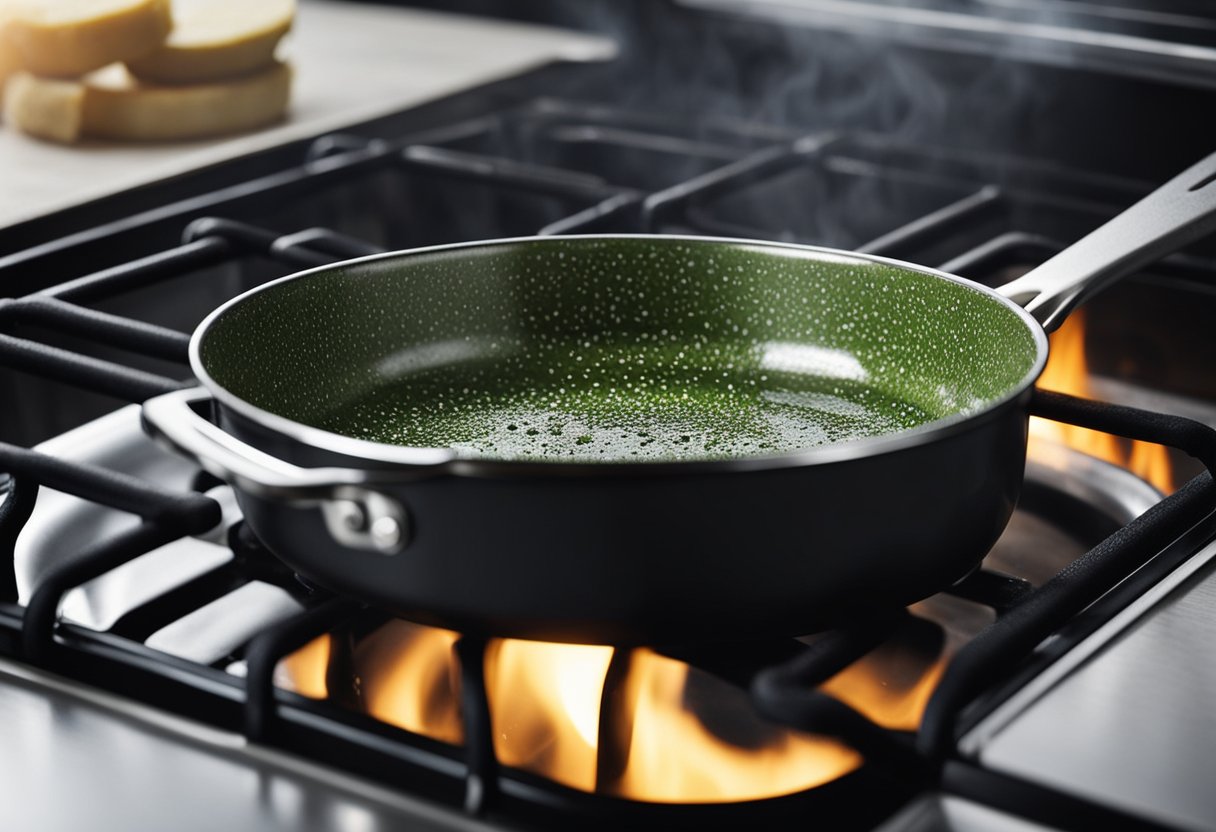
As someone who has owned and used enamel pans for years, I have learned that there are a few things you should never do with them. Here are some tips to help you avoid damaging your enamel pans:
Don’t Put Enamel Pans in the Dishwasher
While enamel pans are generally easy to clean, they should never be put in the dishwasher. The high heat and harsh detergents can damage the enamel coating, causing it to chip or crack. Instead, wash your enamel pans by hand using mild dish soap and warm water.
Don’t Let Food Sit in Enamel Pans for Too Long
Enamel pans are prone to developing crusty or burnt-on food if you leave them sitting for too long. This is especially true if you cook acidic foods, such as tomato sauce or vinegar-based dressings. To avoid this, clean your enamel pans as soon as possible after use.
Don’t Use Abrasive Cleaners on Enamel Pans
Enamel pans should never be cleaned with abrasive cleaners like steel wool or harsh chemicals like bleach.
These can scratch or damage the enamel coating, making it more difficult to clean and potentially exposing the metal underneath. Instead, use a soft sponge or non-metal scrubber with mild dish soap and warm water.
By following these simple tips, you can help ensure that your enamel pans stay in great condition for years to come.
Frequently Asked Questions
What is the best way to clean the outside of Le Creuset cookware?
To clean the outside of Le Creuset cookware, use a mixture of warm water and mild dish soap. Use a soft sponge or cloth to gently scrub the exterior of the cookware. Rinse thoroughly with warm water and dry with a soft towel.
How do you clean a burnt enamel tray?
To clean a burnt enamel tray, soak it in a mixture of hot water and white vinegar for 30 minutes. Then, scrub the burnt areas with a mixture of baking soda and water. Rinse thoroughly with warm water and dry with a soft towel.
How do you clean enamel Dutch oven?
To clean an enamel Dutch oven, allow it to cool to room temperature before cleaning. Then, use a mixture of warm water and mild dish soap to gently scrub the interior and exterior of the Dutch oven. Rinse thoroughly with warm water and dry with a soft towel.
How do you restore enamel cookware?
To restore enamel cookware, first, clean it thoroughly using a mixture of warm water and mild dish soap.
Then, use a mixture of baking soda and water to gently scrub the interior and exterior of the cookware. Rinse thoroughly with warm water and dry with a soft towel.
What is the best enamel cleaner?
There are several effective enamel cleaners available on the market. Some popular options include Bar Keepers Friend, Bon Ami, and Comet. Always follow the manufacturer’s instructions when using any cleaning product.
How do you clean enamel with baking soda and vinegar?
To clean enamel with baking soda and vinegar, first, sprinkle baking soda over the surface of the enamel. Then, pour a small amount of vinegar over the baking soda to create a paste.
Use a soft sponge or cloth to gently scrub the enamel. Rinse thoroughly with warm water and dry with a soft towel.


